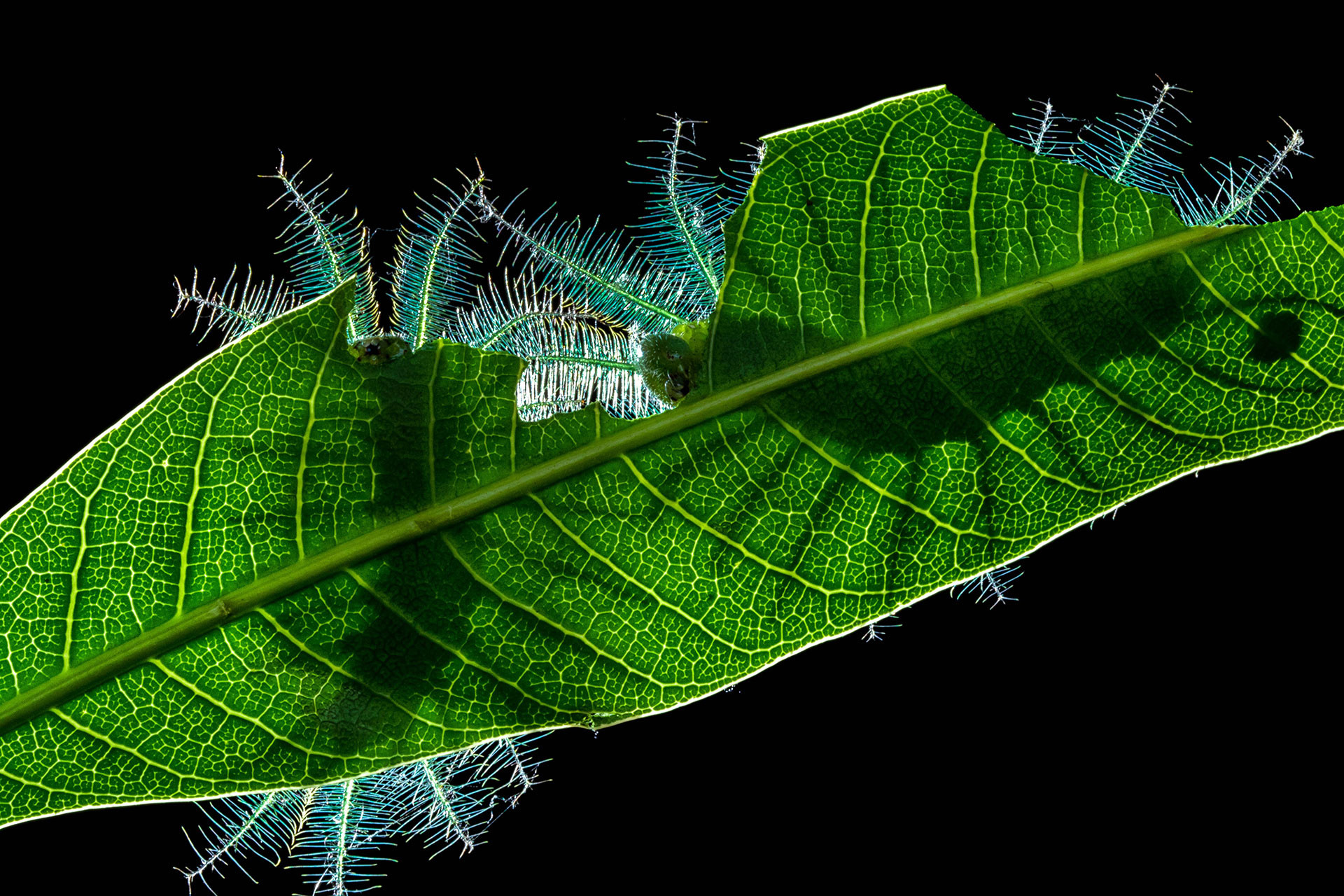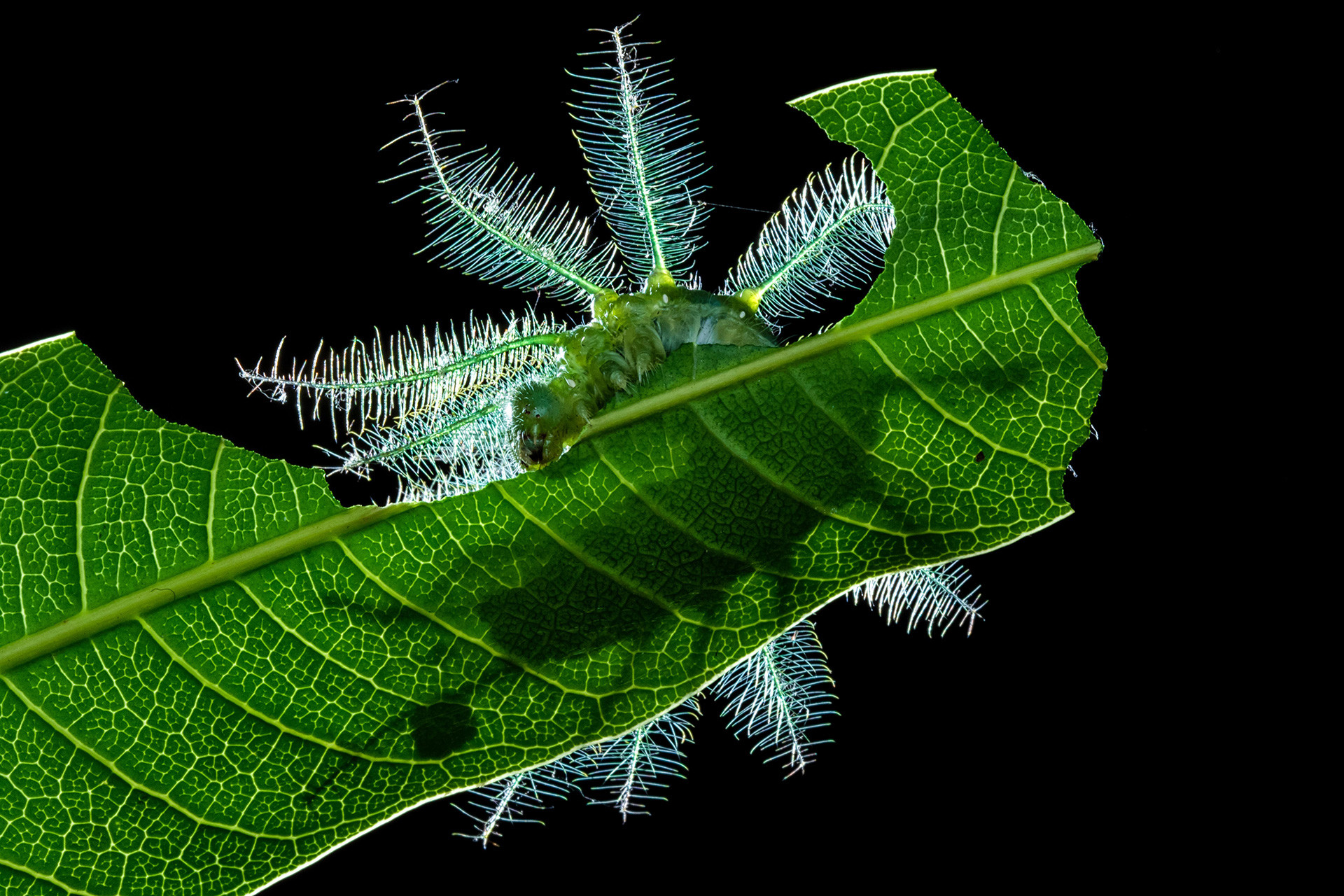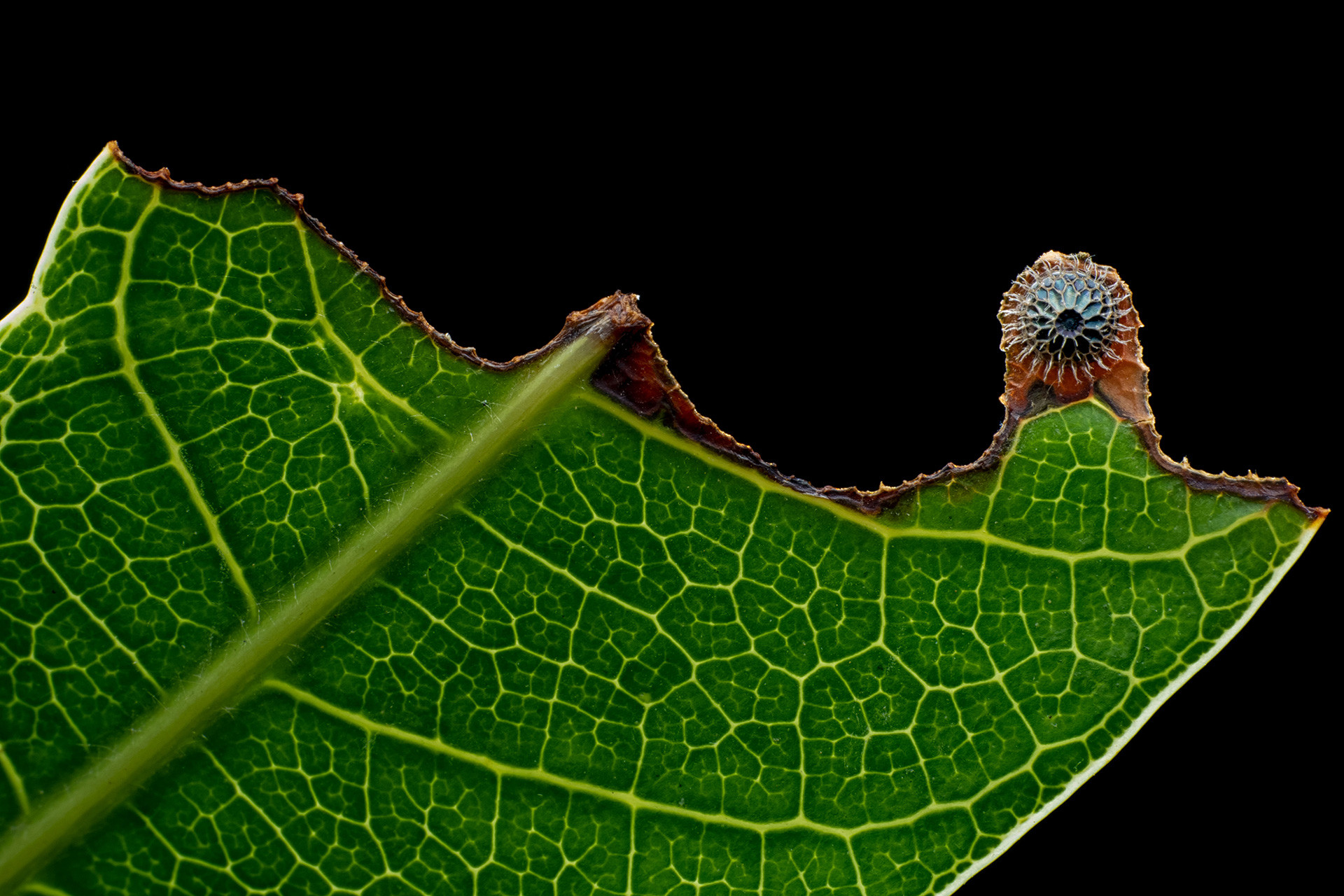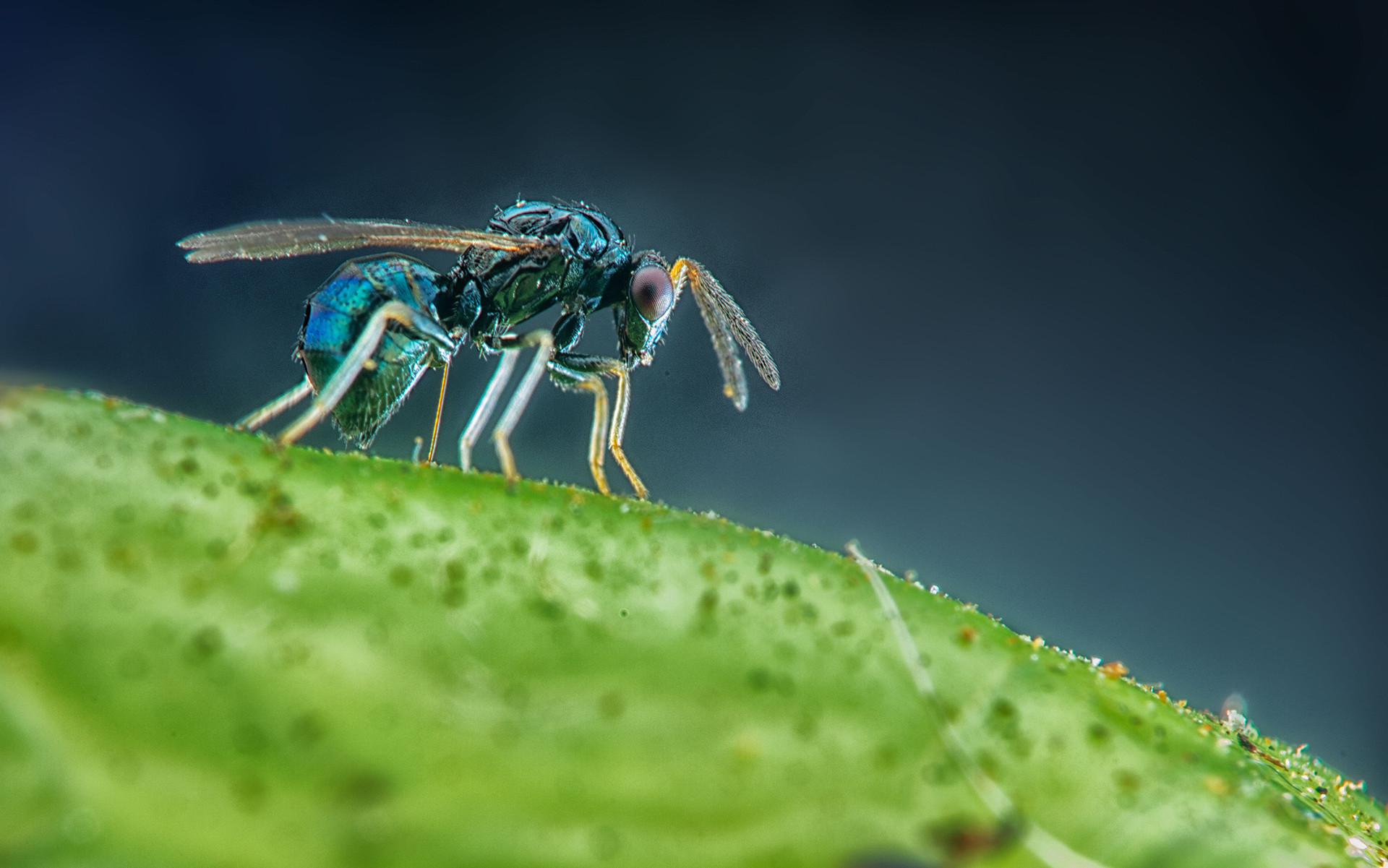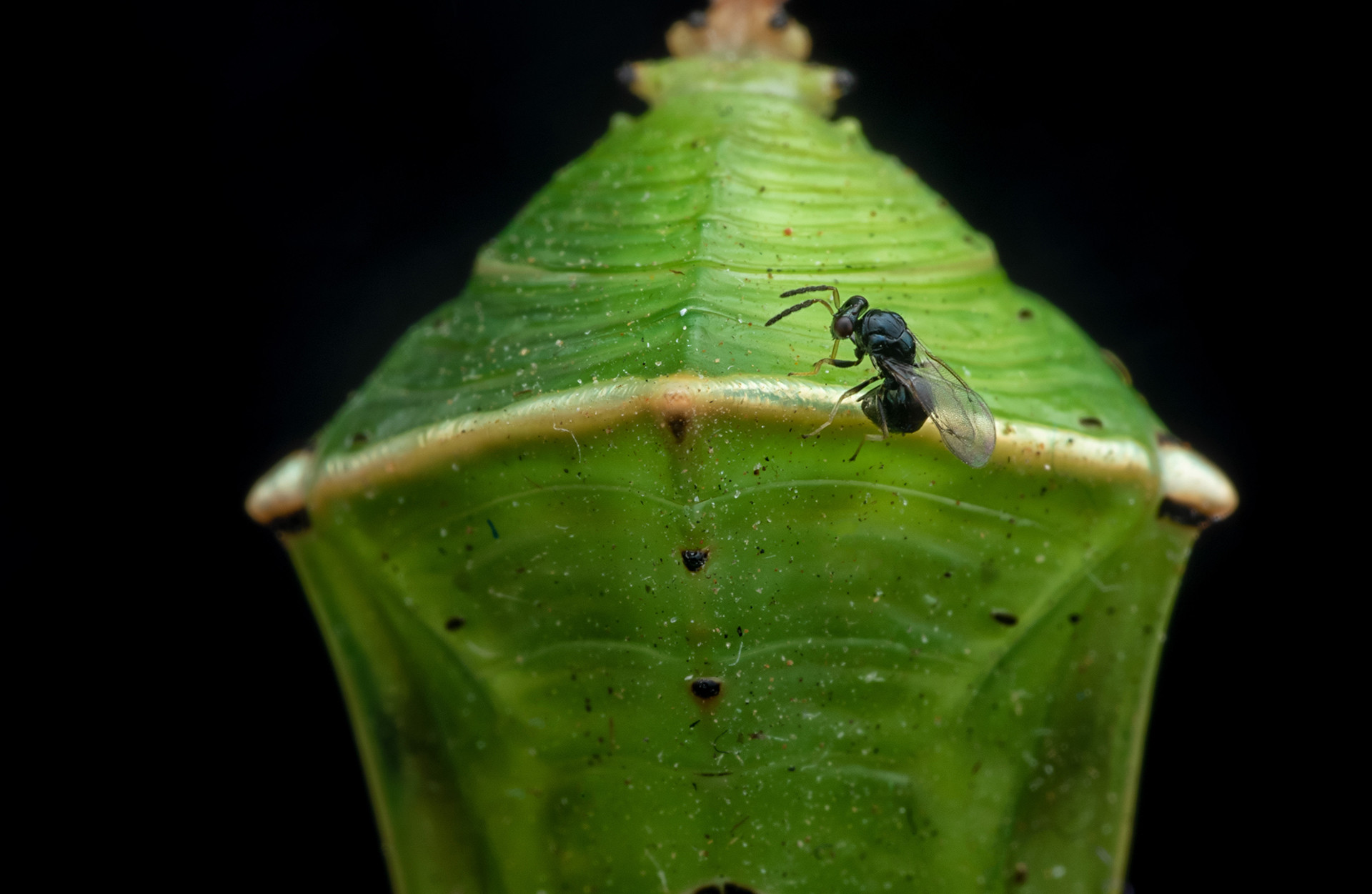As a nature photographer, I always keep a close eye on the wildlife in my backyard when the seasons change. Once the monsoon rains started bucketing down, the mango trees in my backyard started hosting a very delicate lifeform: the eggs of a Common Baron Butterfly (Euthalia aconthea). The tiny water-drop-like eggs hatch into hungry little caterpillars, and they start to eat everything in their vicinity. Once in their larva form, they moult multiple times and become longer and plumper. It then becomes quite difficult to spot them, as they sort of melt into the backdrop and become one with the mango leaf that they call home. With a yellowish-white spine and a bristled appearance, the caterpillar is quite attractive. But against a mango leaf, it is almost impossible to tell them apart, their spine lining up with the midrib of the leaf and their feather-like bristles almost invisible against the green. After all, all a caterpillar wants is to eat and not be eaten!
Mostly, the caterpillars were busy in the nighttime, which was when they feasted upon the mango leaves. For me, it became a daily routine, observing them and trying to capture them on camera. Then one day, I was thrilled to find another Common Baron Butterfly egg on a half-eaten mango leaf. The resident caterpillar of the leaf, for whatever reason, ate around the egg, as if recognising the egg as the same species. More likely that there was plenty of juicy mango leaf for the caterpillar to eat, instead of attempting to eat what was clearly not a mango leaf.
Alas, the successful transformation and metamorphosis of eggs into beautiful butterflies is never a guarantee. Even before the eggs can hatch into tiny caterpillars, some predators and parasites can prove deadly. I observed the same egg that had survived the eating frenzy of the caterpillar, being attacked by a wasp. The wasp proved itself to be a parasite as it injected its eggs into the butterfly egg. Thus, once the wasp eggs hatch, the larvae are ensured a definite source of nutrients. I later observed the same with Common Baron pupae, injected with wasp eggs, that eventually gave birth to wasp larvae instead of beautiful butterflies. Ultimately, it's about how nature ensures balance. The parasite wasps prevent the colonisation of caterpillars, and thus ensures the survival of the mango tree, on which plenty of other organisms are dependent.


